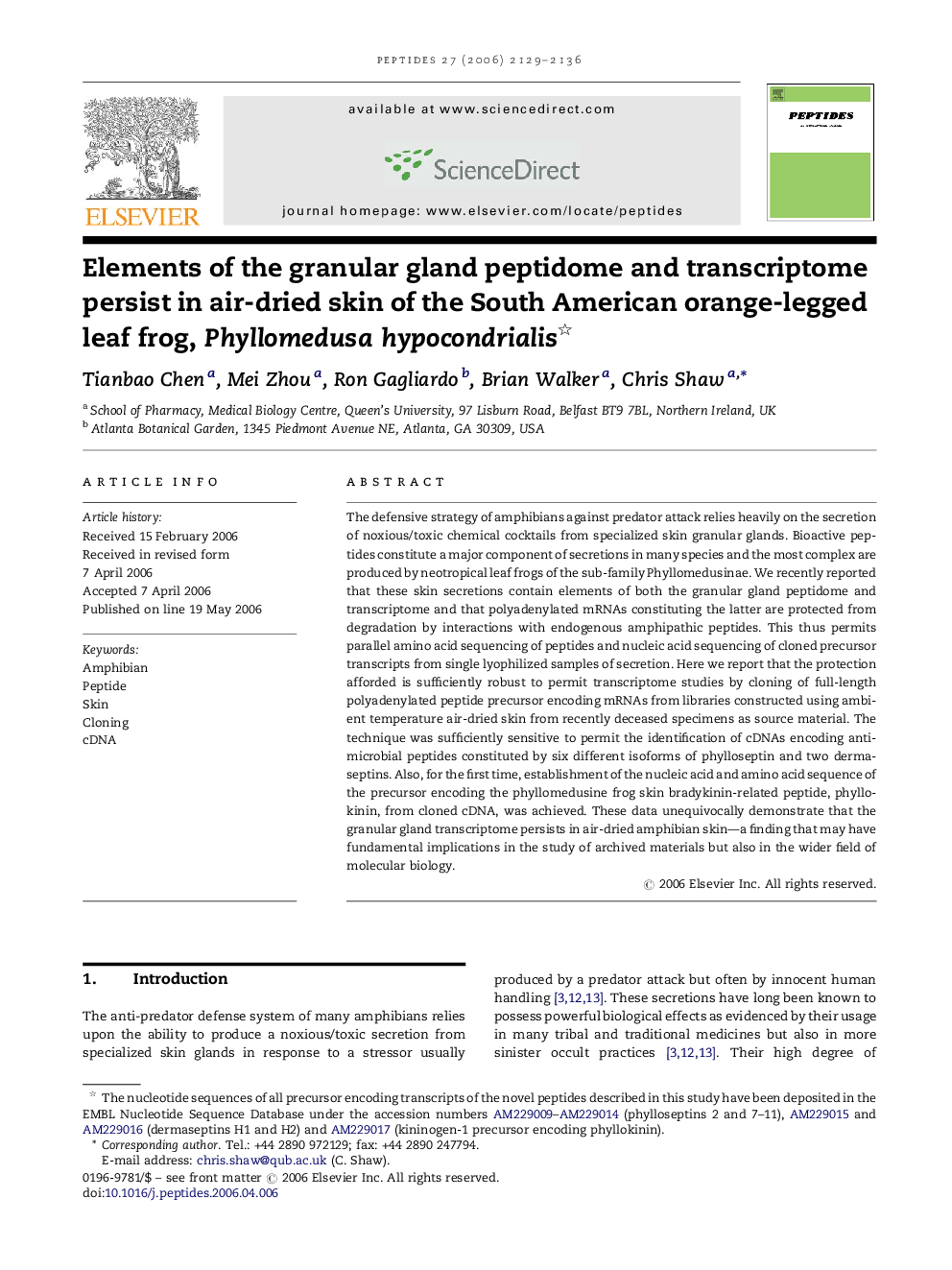| Article ID | Journal | Published Year | Pages | File Type |
|---|---|---|---|---|
| 2007956 | Peptides | 2006 | 8 Pages |
The defensive strategy of amphibians against predator attack relies heavily on the secretion of noxious/toxic chemical cocktails from specialized skin granular glands. Bioactive peptides constitute a major component of secretions in many species and the most complex are produced by neotropical leaf frogs of the sub-family Phyllomedusinae. We recently reported that these skin secretions contain elements of both the granular gland peptidome and transcriptome and that polyadenylated mRNAs constituting the latter are protected from degradation by interactions with endogenous amphipathic peptides. This thus permits parallel amino acid sequencing of peptides and nucleic acid sequencing of cloned precursor transcripts from single lyophilized samples of secretion. Here we report that the protection afforded is sufficiently robust to permit transcriptome studies by cloning of full-length polyadenylated peptide precursor encoding mRNAs from libraries constructed using ambient temperature air-dried skin from recently deceased specimens as source material. The technique was sufficiently sensitive to permit the identification of cDNAs encoding antimicrobial peptides constituted by six different isoforms of phylloseptin and two dermaseptins. Also, for the first time, establishment of the nucleic acid and amino acid sequence of the precursor encoding the phyllomedusine frog skin bradykinin-related peptide, phyllokinin, from cloned cDNA, was achieved. These data unequivocally demonstrate that the granular gland transcriptome persists in air-dried amphibian skin—a finding that may have fundamental implications in the study of archived materials but also in the wider field of molecular biology.
